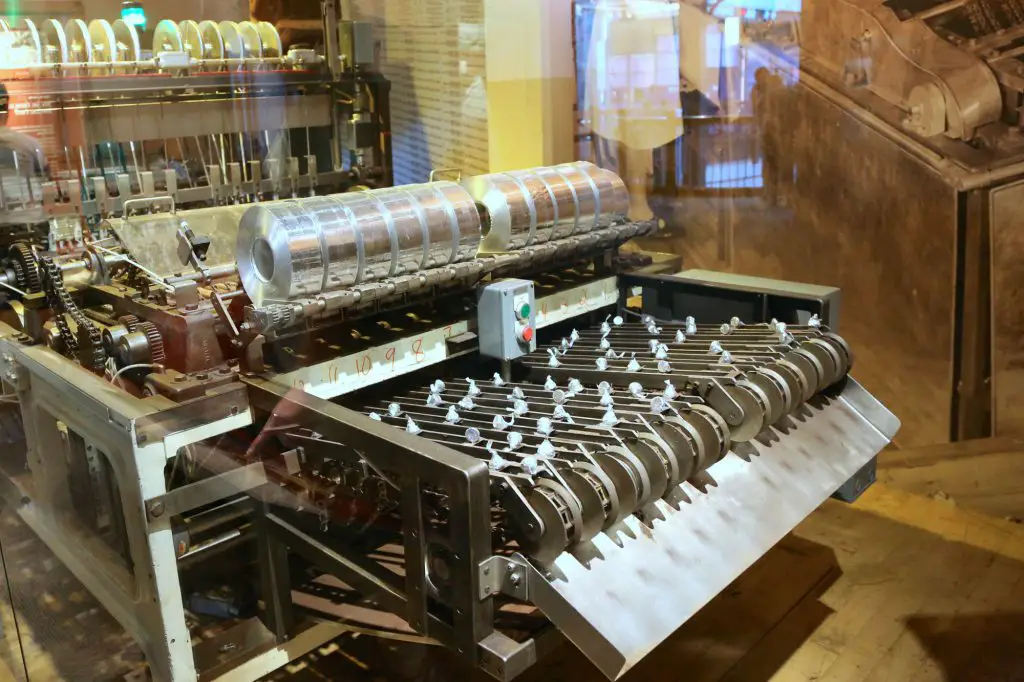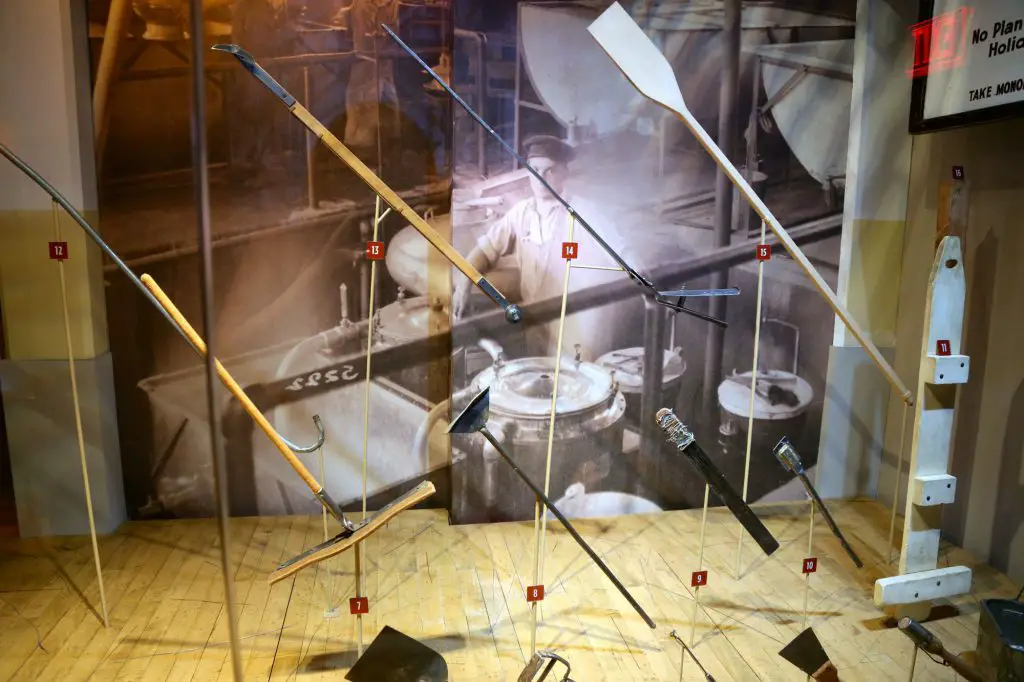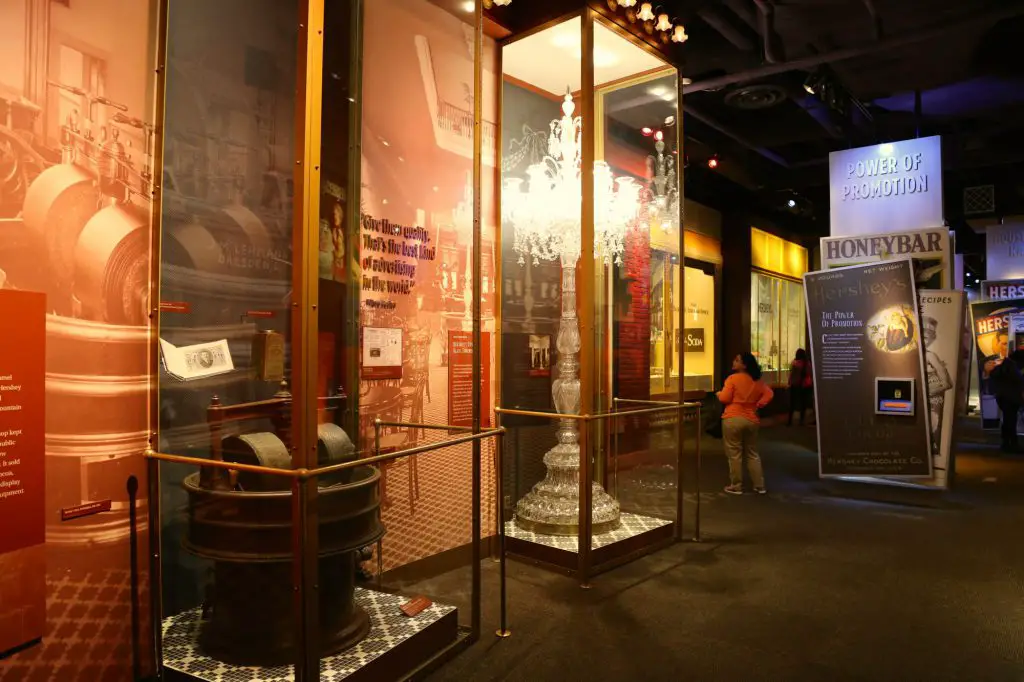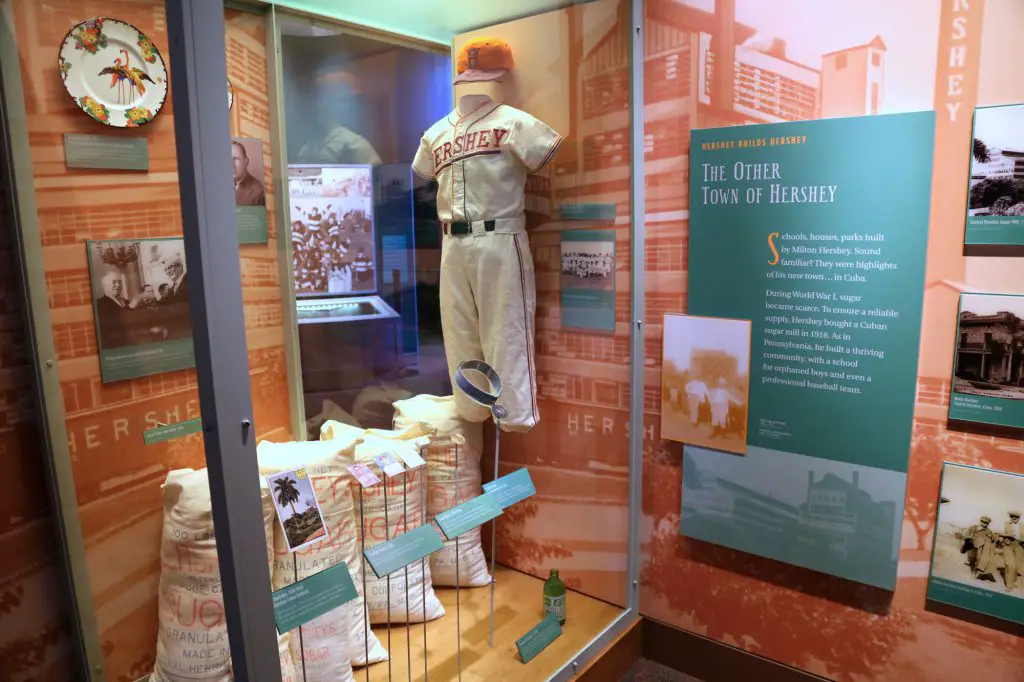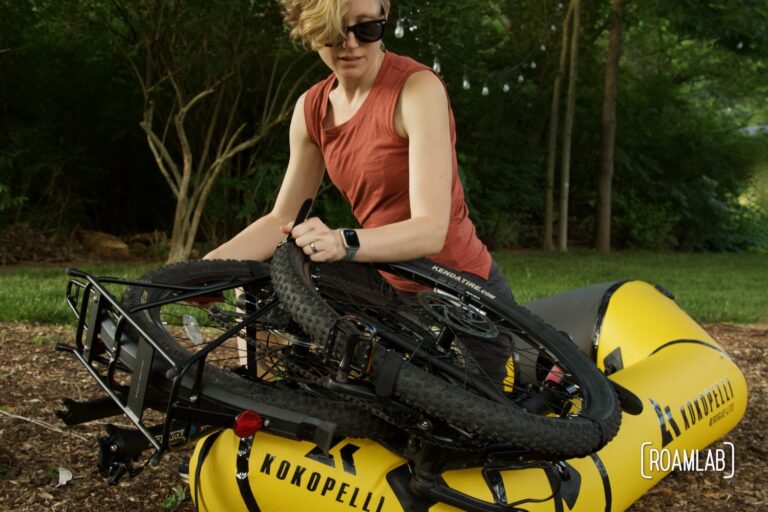So… it’s 2PM, we have a four hour ride ahead of us before we get to our camping digs and the partner sees an exit sign for “Hershey” and maniacally swerves over to the exit. I tell him, we really need to stay on course, but he REALLY wants to see Hershey. I ask “what’s so special about Hershey” and he launches into descriptions of a town that would rival one built by Willy Wonka: Kiss shaped lights, chocolate in abundance, and the like. Turns out, Hershey is a town made by the chocolate baron to house his workers. Along with the town, there was a commemorative museum.
No, this town’s name is not just tastily named out of coincidence. Like the chocolate bar recipe of the same name, this town was made by Hershey. Not only does it have the requisite factory, employee housing, and company store, but the town of Hershey now houses an amusement park and a commemorative museum in honor of Hershey: the man, the town, and the chocolate bar for the people.
The story of Hershey is an ideal case study and inspiration for aspiring entrepreneurs. Hershey came from humble origins and—with only a 4th grade education—was apprenticed to a printer. When he proved troublesome to his master, Hershey found a new apprenticeship with a confectioner, where he learned the trade of fine candies.
After completing his apprenticeship in 1873 and recognizing an opportunity in the upcoming world’s fair, Hershey opened a confections shop with financing from his mother’s side of the family and assistance from his mother and aunt. While he found success for a few years, after six years of operation, he found himself over his head and had to declare bankruptcy. Indeed, this was not the last false start he would experience. Hershey attempted to reestablish his business in Chicago, New Orleans, and New York.
Eventually, Hershey found success in the caramels. Before anyone would buy a Hershey’s chocolate bar, the Lancaster Caramel Company was earning $1,000,000 a year selling caramel. A natural reaction to success would be to go with the flow, yet Hershey saw the mass consumption of caramel as a passing phase and shifted his attention to chocolate. Importation of cocoa into the US was on the rise and yet there was no chocolate offering for the mass market. In 1894, Hershey launched a subsidiary, Hershey Chocolate Company. In 1900, Hershey sold off his massively successful caramel company to focus specifically on chocolate.
Before going full time into chocolate, the Hershey Chocolate Company was mainly manufacturing baking chocolate, cocoa, and candy coverings. But along with the sale of Hershey’s caramel company in 1900, the first Hershey’s milk chocolate bar went on the market.
There were many things that were revolutionary about Hershey’s business. The recipe was unique between the roasting method and the milk. Hershey roasted the cocoa at a higher temperature so that lower quality cocoa could be used but maintain a pleasant taste. Also, the milk had sugar added early in the process and was twice condensed. The factory itself was special, as it implemented a similar assembly line structure that was revolutionizing Ford cars at that time. Finally, Hershey encouraged innovation among his employees, and many tools of the trade were designed by the workers most familiar with their potential use.
In Hershey’s youth, chocolates and many other sweets were far too expensive to make to be affordable for the average man. They were a delicacy. Hershey is the man who democratized chocolate and brought it to the masses. His revolutionary recipe and adoption of early production lines allowed him to produce chocolate at a price point and quality that was accessible.



